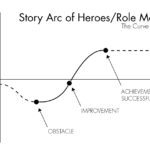Writing a Novel – 3 Tips for Writing a Chapter
When it comes to writing a novel, you have a general idea of where you want the story to go, but once you have the big outline, you have to start to flesh out those big sections and write them well. Listed below are some tips that will help you achieve these goals.
- Plan it all out.
- Decide what will be in each chapter.
- Enrich the writing in each chapter.
Chapters per Section
First, decide how many things happen in each section and then put those in chapters. This is not something that will be set in stone—you’re just doing a general estimate for now—but at least you’ll know what’s coming as you write.
The book Save the Cat is an excellent way to figure out what event should go where, and there’s even a calculator on the site that helps you estimate how many words should go in each section.

By organizing the major events in your novel in chapters, you can make easy transitions in place and time from one chapter to the next. It’s up to you how long each chapter should be. One page might be plenty to make an impact while another might be four thousand words long.
You get to choose how much prose, dialogue, and action occurs in each one, and you’ll likely end each one with a cliffhanger to keep the reader reading. You don’t have to stick to one incident per chapter; you can also switch between scenes by inserting a blank line or symbol between paragraphs. This way your readers know that one incident or character’s point of view has come to an end and another begins.
Character Motivation
Know your characters well. It’s crucial to that your reader understands and identifies with your characters’ motivations so they can root for or hate them as they move forward to achieve their goals.
For that to be convincing, you must know your characters as deeply as possible, and write in such a way that your readers can go deep with them too. Think about what motivates people you know, what drives them. Some want to be seen as successful, some want love, some want companionship, but most people don’t really know what they’re hungering for internally. The reader should though.
People do, however, often know what they want that’s more tangible, such as finding their father or their missing dog or getting revenge. Put obstacles in their way so that they don’t get what they want too easily.
Setting and Prose
Make sure you allow readers to see and feel the places your characters go, and do this through a mix of visual descriptions, dialogue, and showing rather than telling. For example, say “Sandy dropped a finger to the table and ran it through the dust” rather than saying “The table beside her was covered in dust.” Now we know no one has sat at the table for years without being told directly.
Some writers make fabulous use of light.
“When he shall die,
Take him and cut him out in little stars,
And he will make the face of heaven so fine
That all the world will be in love with night
And pay no worship to the garish sun.”
― William Shakespeare, Romeo and Juliet
“We went down into the silent garden. Dawn is the time when nothing breathes, the hour of silence. Everything is transfixed, only the light moves.”
― Leonora Carrington
Others pick and choose from the senses—smell, taste, sight, hearing, touch, emotions.
“The smell of leather is rich, pouring off the shelves of handbags, belts, and other accessories. I stop to inhale it before we walk on into the back of the shop through a small doorway. The room is about twice the size of our living room at home, with two long tables lining the walls, holding up all kinds of pots and coffee mugs filled with leather tools with bulbous wooden handles.”
—My debut novel, My Heart Went Walking
Conflict
Creating conflict in a novel can be as simple as placing a character in an uncomfortable situation. The conflict can be physical, moral, psychological, or cultural. It can also be economic, since a protagonist may be forced to accept the situation they’re in or to try to escape it.
The best novels keep thwarting the main character’s goals and motivation, but never so much that the reader wants to throw the book across the room. You want to keep just enough hope along with the delays.
Dialogue
One of the most important things to consider when writing dialogue in a novel is the tone of the characters’ voices. Dialogue is not the time to indulge in blow-by-blow exposition; it’s the moment when a character speaks. Dialogue is also crucial for setting the scene, so keep the right tone—sarcastic, afraid, hopeful, angry, etc.
Story Arc
 A story should have a beginning, middle, and end, and an arc that connects those elements. A good story arc has rising and falling tension, emotion, and character development that grows as the story develops, keeping your reader engaged and wanting to read more.
A story should have a beginning, middle, and end, and an arc that connects those elements. A good story arc has rising and falling tension, emotion, and character development that grows as the story develops, keeping your reader engaged and wanting to read more.
Point of View
You must consider which character’s point of view (POV) you’re writing from because readers will see the world through that character’s eyes—their motivations, limitations, and thoughts. Never jump from one character’s POV to another’s in the same paragraph, and ideally, don’t jump until there’s a line break or chapter break.
A Well-Written Chapter Has…
Granted, many of the tips I’ve given here are for writing in general, but a good chapter consists of everything I’ve written about above:
- Character motivation
- Setting and prose
- Conflict
- Dialogue
- Story arc – advancing the story
- Point of view
So choose a chapter and start highlighting each aspect in a different color. That way you’ll know what you’ve done too much or too little of and you can go into your rewrite ready to fix it all.
Good luck!
Looking for an Editor Who Can Make Your Novel Better?
We can help. The most important thing to know is that this type of editing is in addition to copyediting and will likely cost more. One of us will work with you chapter by chapter to turn your novel into one that readers love and praise lavishly.
Contact us to talk about this more and to see if we recommend you take this step first.





